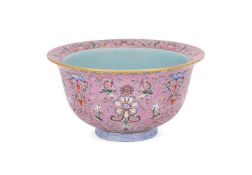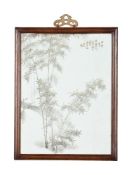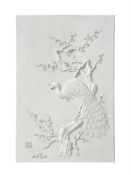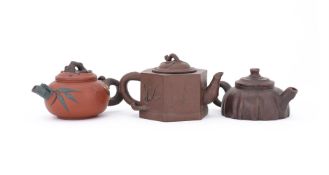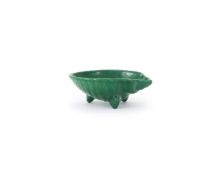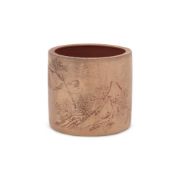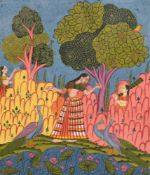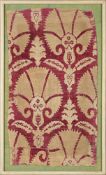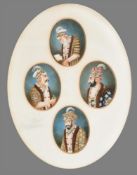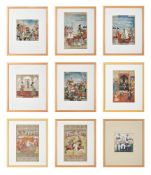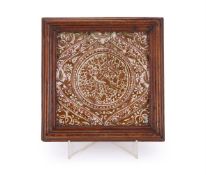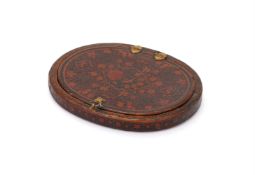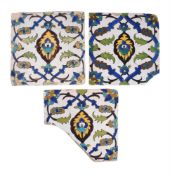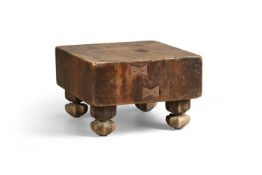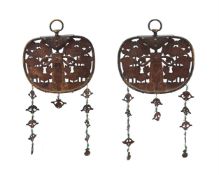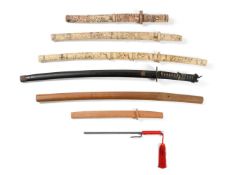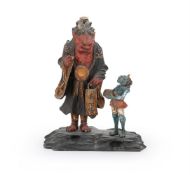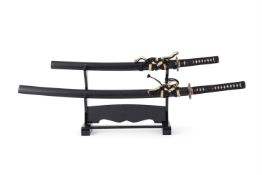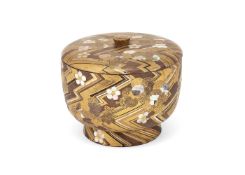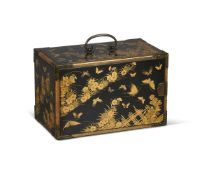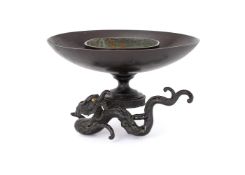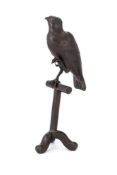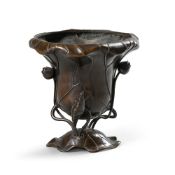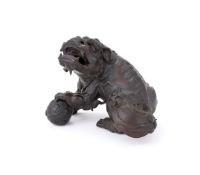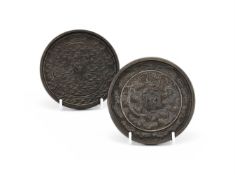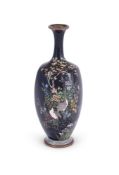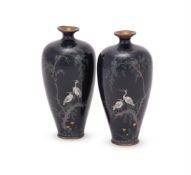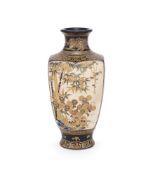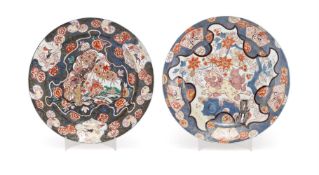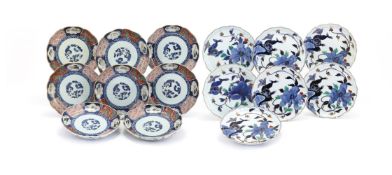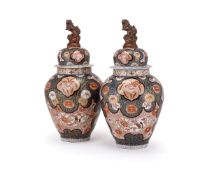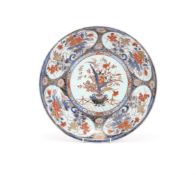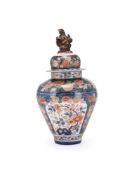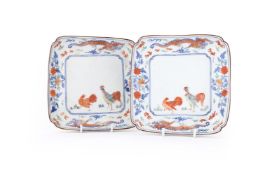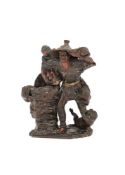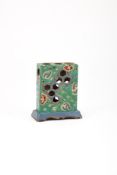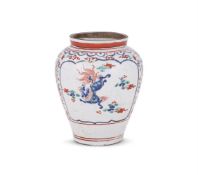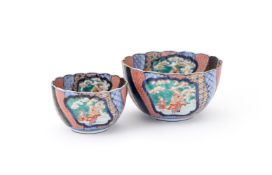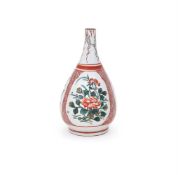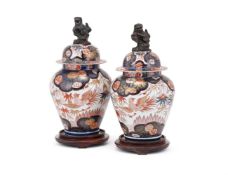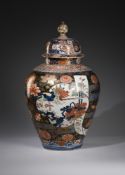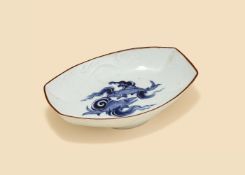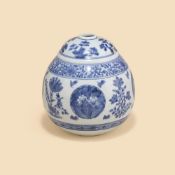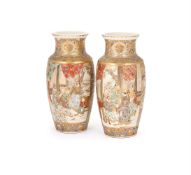A Chinese Famille Rose pink-ground jardinière, possibly Daoguang period, decorated on the exterior in bright enamels with stylized lotus bl...
Asiatika
Sortieren nach:
- Oberkategorie,
- Auktionstyp
- Liste
- Galerie
-
3983 Los(e)/Seite
A Chinese porcelain painted plaque of bamboo, 19th century, painted in black enamels and inscribed with a dedication, 31.5 cm x 23.5 cm, ha...
A Chinese biscuit plaque of a peacock in a prunus tree, Qing dynasty, 19th century, well detail and with raised Qianlong seal mark bottom l...
A group of three Chinese Yixing teapots, 20th century, each stamped with the maker's mark on the base, the largest 11cm high 20世紀紫砂壺三把 ...
A Chinese green crackled glazed washer, 19th century, moulded in the form of a shell, 10.8 cm long × 4.4cm wide 清十九世紀 綠哥釉螺型水呈 Con...
A Chinese Yixing incised brushpot, 19th century, incised with a magpie perched on flowering branches and inscribed, 13cm high 晚清 紫砂花鳥圖題詩...
Four Paintings from a Ragamala Series, Bundelkhand, Central India, circa 18th century, gouache with gold on paper, including Kakuba Ragini, Desakh...
An Ottoman silk velvet (Catma) panel, circa 1600, Bursa, Anatolia, with repeated design of stylised carnations, growing from tulip shaped r...
A set of four Indian oval miniature portraits of Mughal emperors, Delhi, mid-19th century, gouache, including Aurangzeb at the top and Shah Jahan ...
Eight illustrated manuscript folios, Qajar Persia and Kashmir, 19th century, gouache with ink on paper, inscribed in black nastaliq script,...
A Qajar lustreware moulded tile
A Qajar lustreware moulded tile, Persia, 19th century, moulded in relief with a round boss decorated with a bird perched within stylised foliage, ...
A Qajar lacquer mirror case
A Qajar lacquer mirror case, Persia, 19th Century, of oval form with hinged lid and clasp, decorated in polychrome and gilt with a central ...
Three Safavid or post-Safavid (Zand) tiles, 18th century, 23.5cm x 23cm (3) Condition Report: all three damaged refe...
A Japanese elm wood go table
A Japanese elm wood go table, Goban, Meiji Period, supported on four foliate fluted carved feet, 45.5cm x 41.5cm x 27cm high Condit...
A Japanese 'Moga' painting
A Japanese 'Moga' painting, mounted as a Kakejiku, in ink and colours in silk depicting a young beauty with short waved hair and wearing a ...
A Pair of Japanese gilt copper Keman, each of typical rounded form with overhead suspension ring and pendant lotus flowers beneath, the fac...
A Japanese Wakizashi blade
A Japanese Wakizashi blade, of Koshi-zori, shinogi-tsukuri form with broad suguha hamon, 58.4cm, O-suriage nakago, one mekugi-ana, signed.....
A Japanese painted and lacquered figure of an Oni, Meiji Period, dressed in the robes of a wandering Buddhist priest, he carries a gong and...
A Japanese Daisho: The Katana blade, 73.5cms long, of koshi-zori, shinogi-tsukuri form with undulating midare hamon, ubu nakago, single mek...
A Japanese Lacquer Deep Bowl and Cover, of circular form, decorated on the exterior on a rinzu (lightening bolt) ground with sprays of chry...
A Japanese Lacquer Kodansu of typically rectilinear form, with hinged door to one end bearing a lock and opening to reveal two deep and one...
A Japanese bronze Ikebana vessel
A Japanese bronze Ikebana vessel, Meiji Period, the conical bowl with rounded oasis holder, the whole supported on a stepped base with key-...
A Japanese bronze Koro
A Japanese bronze Koro, Meiji period, cast in the form of a bird of prey, the plumage well defined, the eyes in shakudo and gold, the bird ...
A Japanese cast bronze jardinière, Meiji Period, in the form of a lotus leaf resting on a further inverted leaf and surrounded by buds and ...
A Japanese Bronze Model of a Karashishi, the creature sits back on its haunches with one forepaw resting on a brocade ball, its head turned...
A Japanese cast bronze mirror
A Japanese cast bronze mirror, 16th century or earlier, of typical circular form, polished to the reverse and decorated to the front in rel...
Kesi mit den Acht Unsterblichen
KESI MIT DEN ACHT UNSTERBLICHEN. Datierung: 18./19.Jh. Technik: Fein gewirktes Textil, Konturen und Akzentuierungen teilweise gemalt. Beschreibung...
Adachi Kinjiro: A Japanese Cloisonné Enamel Vase, of bulbous hexagonal shape on a splayed foot with a tall, slender neck and trumpet mouth,...
Ovoide Vase mit Blumenornament
OVOIDE VASE MIT BLUMENORNAMENT. Herkunft: China. Dynastie: Nördliche Song Dynastie. Datierung: Um 1000/1020 n.Chr. Technik: Steinzeug mit Schlicke...
Taotie Maske
TAOTIE MASKE. Herkunft: China. Dynastie: Han Dynastie. Datierung: 207 v. Chr. - 25 n.Chr. Technik: Bronze mit Resten von Vergoldung. Beschreibung:...
Ota Tamashiro: A Pair of Japanese Cloisonné Enamel Vases, each of tapered ovoid form on a slightly splayed foot, with narrow neck and evert...
GROßES YUZEN BIRODO MIT SEESCHLACHT. Herkunft: Japan. Dynastie: Späte Meiji-Zeit. Datierung: Um 1900. Technik: Seidensamt partiell geschoren und i...
A Satsuma Pottery Vase
A Satsuma Pottery Vase, Meiji Period, of tapered, hexagonal section resting on a splayed foot and rising to a waisted, cylindrical neck, de...
A large Samson or Continental charger, late 19th century, in Japanese Arita style, 54.5cm diameter and a large Samson Imari charger, late 1...
Große Lotosschale
GROßE LOTOSSCHALE. Herkunft: Laos. Datierung: 20.Jh. Technik: Silber. Ca. 295g. Beschreibung: Bauchige Form mit flachem Boden und abgesetztem Lipp...
ZWEI TEETASSENSTÄNDER UND VIER TEESCHALEN (PHORBA). Herkunft: Tibet. Datierung: Anfang 20.Jh. Technik: Silber-Repoussé, teilweise vergoldet. Wurze...
Seven various Japanese Imari dishes, Meiji Period, late 19th century, painted with kyin and Iris, 21.8cm diameter and eight Japanese Imari ...
A large pair of Samson or Continental Imari vases and covers, late 19th or 20th century, In Japanese Arita style, 53cm high (2) Con...
RITUALGEFÄß AUS BERNSTEIN MIT GESICHTERN UND ORNAMENTDEKOR. Herkunft: Tibet. Datierung: 19.Jh. Technik: Silber-Repoussé, Bernstein. Beschreibung: ...
A Japanese Imari charger
A Japanese Imari charger, Edo Period, late 17th century, 37cm diameter Condition Report: several hair cracks to rim firing f...
Orakelkrone sog. Ganlep
ORAKELKRONE SOG. GANLEP. Herkunft: Ladakh. Tibet. Technik: Roter, leicht verblichener Stoff mit aufgenähten Silberornamenten, großen Türkisen und ...
Zeremonialkrone eines Lamas
ZEREMONIALKRONE EINES LAMAS. Herkunft: Ost-Tibet. Datierung: 19./20.Jh. Technik: Kupfer und Silber-Repoussé, Totenköpfe vergoldet, Steinbesatz, St...
A Samson or Continental Imari vase and cover, late 19th or 20th century, in Japanese Arita style, 60cm high Condition Report: e...
A Pair of Arita Porcelain Dishes
A Pair of Arita Porcelain Dishes, each of lobed square form resting on a short foot rim, decorated in underglaze-blue, rouge-de-fer, overglaze ena...
Vajrasattva-Helm
VAJRASATTVA-HELM. Herkunft: Ost-Tibet. Datierung: Um 1900. Technik: Kupfer, Silber, Bergkristall, verschiedene Steincabochons. Beschreibung: Der d...
A Japanese Bizen pottery model of a farmer, Late Edo Period, carrying a basket of peaches and crying out in surprise as he is attacked by a troop ...
Fragment eines Mandala
FRAGMENT EINES MANDALA. Herkunft: Tibet oder Nepal. Datierung: 18./19.Jh. Technik: Kupferblech, getrieben, feuervergoldet. Beschreibung: Brückenfö...
A Japanese Kyo-yaki incense stand, late 18th century, the rectilinear body reticulated with honey-comb design and enamelled in typical colours wit...
Reiseschrein, sog. Ga'u
REISESCHREIN, SOG. GA'U. Herkunft: Tibet oder Bhutan. Technik: Silber, Repoussé, Textil u.a. Beschreibung: Zweiteiliger, rechteckiger Amulettbehäl...
Sarvabuddha-Dakini
SARVABUDDHA-DAKINI. Herkunft: Tibet. Datierung: 18./19.Jh. Technik: Bronze, feuervergoldet. Steinbesatz. Beschreibung: Die Initationsgöttin von Na...
A Japanese Arita Vase
A Japanese Arita Vase, of tapered ovoid form rising to a cylindrical neck, decorated in overglaze enamels with a panel depicting a spotted ...
A Japanese Arita Porcelain Bowl
A Japanese Arita Porcelain Bowl, of circular spirally lobed form resting on a short foot rim, and decorated in underglaze-blue, overglaze e...
An Arita Ko-Kutani bottle vase
An Arita Ko-Kutani bottle vase, Edo Period, late 17th century, painted in green, yellow, black and iron-red enamels with three floral reser...
A pair of Samson or Continental Imari vases, late 19th century, in Japanese Arita style, 34cm high, wood stands (2) Condition Repor...
Stehender Buddha Shakyamuni
STEHENDER BUDDHA SHAKYAMUNI. Herkunft: Thailand. Dynastie: Ratanakosin. Datierung: 19./20.Jh. Technik: In mehreren Schichten über rotbrauner Lackf...
A good large Japanese Arita vase and cover, 17th or early 18th century, painted to the exterior with panels of pagodas on a dense floral gr...
A Japanese Arita blue and white dish, late Edo Period, painted in underglaze blue with two fish swimming amongst waves, moulded borders, br...
A Japanese Kakiemon Dish of circular, multi-lobed form resting on a short footrim, decorated in underglaze- blue with a pair of long-tailed...
An Unusual Arita Porcelain Hookah Base, 19th Century, the body of bulbous form decorated in underglaze-blue with floral roundels. birds and...
A pair of Satsuma vases
A pair of Satsuma vases, Meiji Period, painted with dignitaries and attendants, paired with panels of warriors amid pines, complex gilt bor...

